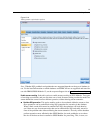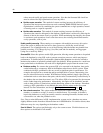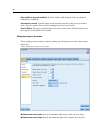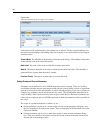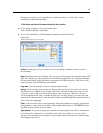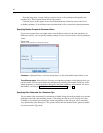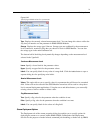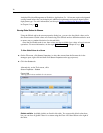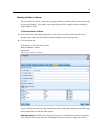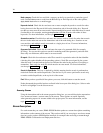
68
Chapter 5
Figure 5-24
Viewing execution times for nodes in the stream
In the table of node execution times, the columns are as follows. Clic k a column heading to sort
the entries into as cending or desce nding order (for example, to see which nodes have the longest
execution times).
Terminal Node.
The identifier of the bra nch to which the node belongs. The identifier is the name
of the terminal node at the end of the branch.
Node Label.
The name of the node to which the execution time refers.
Node Id.
The unique identifier of the node to which the execution time refers. This identifier is
generated by the system when the node is created.
Execution Time(s).
The time in seconds taken to execute this no de.
Setting Stream and Session Parameters
Parameters can be defined for use in CLEM expressions and in scripting. They are, in effect,
user-defined variables that are saved and persisted with the current stream , session, or SuperNode
and c an be accessed from the user interface as well as thr ough scripting. If you save a stream, for
example, any parameters set for that stream a r e also saved. ( This distinguishes them from local
script variables, which can be used only in the script in which they are declared.) Parameters are
often used in scripting as p art of a CLEM expression in which the parameter v alue is specified in
the script.
The scope of a parameter depends on where it is set:
Stream paramete r s can be set in a stream script or in the stream properties dialog box, and
they are availab
le to a ll nodes in the stream. They are displayed on the Parameters list in the
Express ion Build er.
Sessio n parameters can be set in a stand-alone script or in the session parameters dialog
box. They are avail able to all streams used in the current session (all streams listed on the
Streams tab in th
e managers pane).




